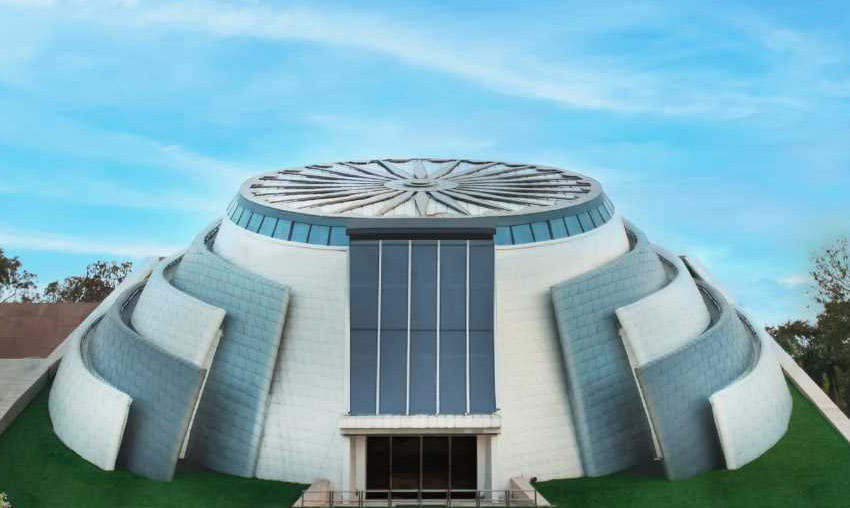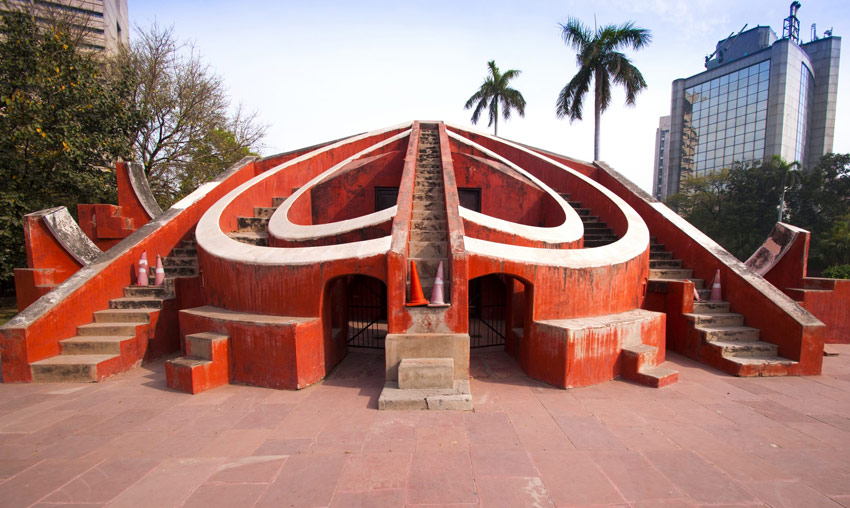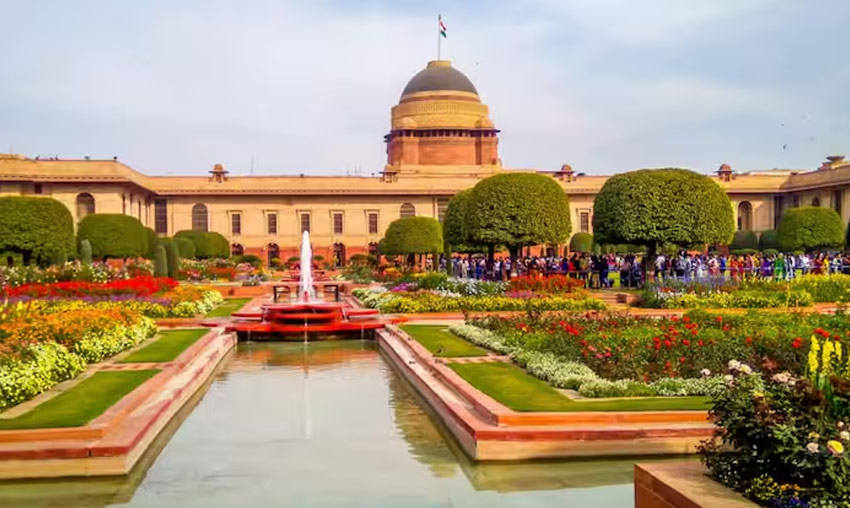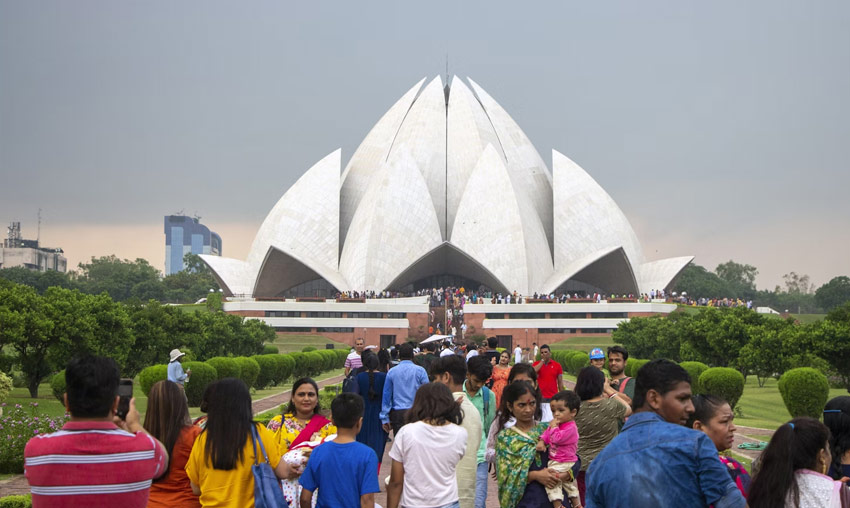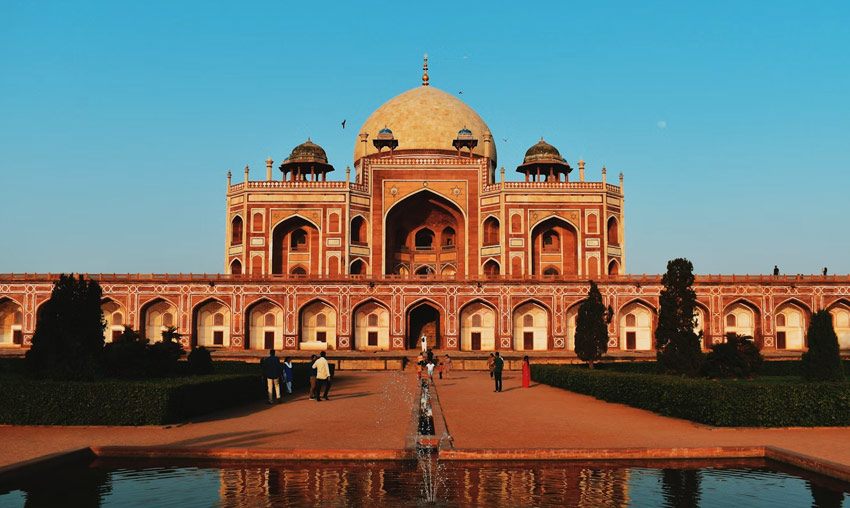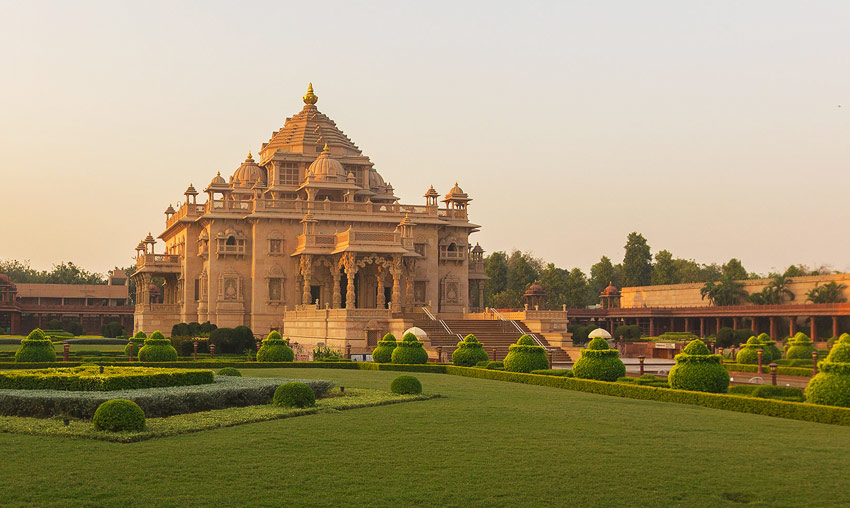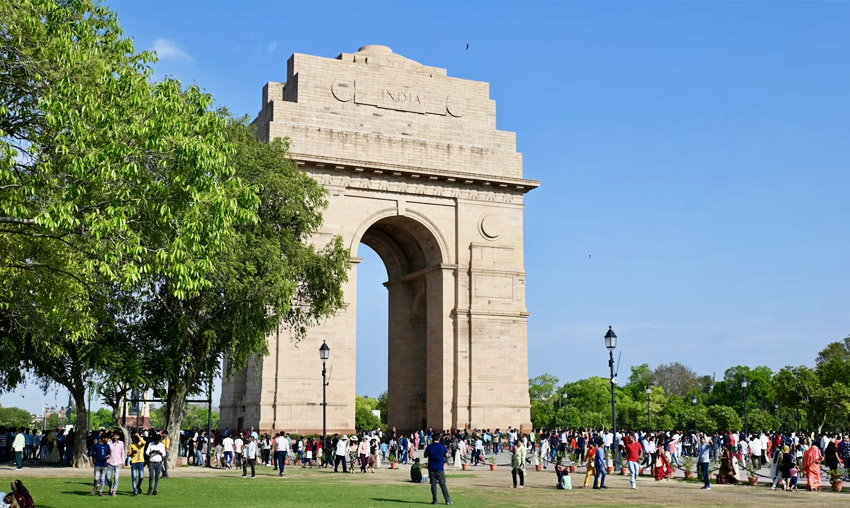Delhi - The Capital of India - Places to Visit in Delhi
India's capital, Delhi, is a multicultural metropolis that includes both the contemporary New Delhi and the ancient Old Delhi. Dilli is known as the city with a heart since it has a lot going on, from bustling malls to ancient sites, from Delhi University's campus to a vast modern metro system.
Old Delhi's meandering, narrow streets and bylanes are remnants of the Mughal era. Chandni Chowk, one of the busiest and oldest markets in the nation, is located in Old Delhi.
If you wish to learn more about Mughal history, take some time to visit historical sites including the Red Fort, Jama Masjid, Humayun's Tomb, and Purana Qila. There are numerous well-known temples in Delhi, but a few that stand out are the ISKON Temple, the Lotus Temple (sometimes called the Bahai Temple), and the Akshardham Temple.
Delhi residents enjoy eating a lot, and visitors will be spoilt for choice with the wide variety of cuisine available at every turn of the street. Delhi's cuisine, which includes everything from kebabs and tikkas to Chhole Bhature, reflects the city's multiculturalism. Travellers can choose from a variety of eateries and cafes.
The political authority of the nation is concentrated in Central Delhi, where must-see locations include the India Gate, the Rajpath, Connaught Place, and the area outside Rashtrapati Bhawan on Raisina Hill (where visitors are not permitted to enter). Evenings are the ideal time to explore this region because all the structures are illuminated and the Amar Jawan Jyoti near India Gate is dazzling.
Delhi offers posh markets and vibrant bazaars, making it a shoppers' paradise. Delhi's diverse markets guarantee that visitors return home with twice as much luggage as they brought!
Best time to visit Delhi
However, due of the cold weather, October through March is the ideal season to visit Delhi. However, due to significant smog cover, some weeks in late November to early January should be avoided. Great weather and reasonably clean air make February and March ideal months to travel outside. Delhi has extremely high summer and winter temperatures. In Delhi, the summer months of April through July are unbearably hot, with highs of up to 45 degrees Celsius. During the monsoon season (August to September), temperatures drop a little, making some days ideal for exploration.
How to Reach Delhi
New Delhi, the nation's capital, has excellent access to all of the world's major cities as well as to other key regions of India. Both foreign and domestic flights arrive at Delhi Airport. The primary railhead is likewise New Delhi, which has excellent connections to all of India's major cities. Additionally, state buses travel to and from nearby cities.
Did You Know These Amazing Places to Visit in Delhi?
A vibrant scene of the Red Fort in Delhi, showcasing its majestic red sandstone walls with intricate carvings. Lush green gardens surround the fort, filled with tourists of diverse backgrounds—Caucasian, Asian, and Hispanic—who are admiring the architecture, strolling through the gardens, and taking photographs, all contributing to a lively atmosphere.
Delhi, the capital city of India, is a vibrant blend of history and culture. It seamlessly combines ancient traditions with modernity, offering visitors a unique experience that spans centuries.
Exploring Delhi's historical landmarks provides insight into the city's significant role in India's heritage. From majestic Mughal architecture to remnants of colonial rule, these sites offer an in-depth look at the past. Equally important are the modern attractions that highlight Delhi's progress and contemporary lifestyle. These venues showcase India's artistic talent, cultural diversity, and innovative spirit.
This article will guide you through some of the most amazing places to visit in Delhi. Whether you're interested in historical landmarks, iconic monuments, spiritual sites, or modern entertainment venues, this list has something for everyone. Discover the best places to see in Delhi and immerse yourself in the captivating essence of this dynamic city.
1. Historical Landmarks
Delhi's historical landmarks are a testament to its rich cultural heritage and architectural brilliance. These monuments offer a glimpse into the city's storied past, reflecting the grandeur of different eras and dynasties.
Red Fort (Lal Qila)
The Red Fort, also known as Lal Qila, stands as a monumental symbol of India's history.
- UNESCO World Heritage Site: Recognized globally for its cultural significance.
- Mughal Architecture: Features stunning red sandstone walls, intricate carvings, and sprawling gardens.
- Historical Importance: A key site in India's freedom struggle, where the Prime Minister addresses the nation on Independence Day.
Qutub Minar
The Qutub Minar is an architectural marvel that attracts visitors from around the world.
- Tallest Brick Minaret: Standing at 73 meters, it exemplifies Indo-Islamic architecture.
- Historical Context: Constructed in 1193 by Qutb-ud-din Aibak, it marks the beginning of Muslim rule in India.
- UNESCO World Heritage Site: Its intricate carvings and inscriptions highlight its historical importance.
Humayun's Tomb
Humayun's Tomb offers insights into Mughal architecture and garden tomb design.
- Mughal Architecture: Known for its symmetrical gardens, red sandstone structure, and Persian influences.
- Precursor to Taj Mahal: Often considered an inspiration for the Taj Mahal due to its grand design and layout.
- UNESCO World Heritage Site: Recognized for its cultural and historical value, it stands as a significant piece of Delhi's heritage.
Exploring these historical landmarks provides a deeper understanding of Delhi's rich past and architectural splendor. Each site tells its own story, contributing to the city's diverse historical narrative.
2. Iconic Monuments and Memorials
Delhi's iconic monuments and memorials showcase India's rich cultural history, highlighting its diverse heritage and historical significance.
India Gate
India Gate is a war memorial honoring the 70,000 Indian soldiers who died during World War I. Designed by Sir Edwin Lutyens, this impressive archway represents the courage and sacrifice of Indian soldiers. Made of red and pale sandstone and granite, the structure features the names of fallen soldiers engraved on its surface. Underneath the arch, the Amar Jawan Jyoti, or the Flame of the Immortal Soldier, burns continuously as a powerful reminder of their bravery.
Jama Masjid
Jama Masjid, one of India's largest mosques, was commissioned by Mughal Emperor Shah Jahan in 1656. This architectural masterpiece embodies the grandeur of Mughal design with its expansive courtyards, towering minarets, and intricately carved domes. With a capacity to accommodate over 25,000 worshippers at once, Jama Masjid holds great cultural significance as a hub for Islamic faith and community gatherings. The mosque’s red sandstone and white marble exterior create a striking visual contrast that enhances its historic appeal.
Gurudwara Bangla Sahib
Gurudwara Bangla Sahib is a well-known Sikh temple recognized for its peaceful ambiance and magnificent architecture. Originally a bungalow belonging to Raja Jai Singh, it was later converted into a gurdwara commemorating Guru Har Krishan Ji's visit to Delhi in 1664. One of the most admirable aspects of this gurdwara is its langar (community kitchen), which provides free meals to thousands of visitors every day regardless of their religion or background—a true representation of Sikh values such as selfless service (seva) and equality. The shining gold dome and reflective Sarovar (holy pond) contribute to its spiritual charm.
3. Spiritual Sites
Delhi's spiritual sites offer a profound glimpse into the city's religious diversity, highlighting the harmonious coexistence of various faiths.
Lotus Temple
The Lotus Temple stands out with its unique design, resembling a lotus flower. This stunning Bahá'í House of Worship is an architectural marvel. It promotes peace and unity by welcoming visitors from all religious backgrounds.
Swaminarayan Akshardham Temple
The Swaminarayan Akshardham Temple is another must-visit site. This magnificent temple complex showcases traditional Indian culture and spirituality through its detailed architecture and engaging exhibitions.
These spiritual landmarks are must-visit places in Delhi for anyone looking to explore the city's rich tapestry of religious traditions.
4. Cultural Hotspots
Delhi's cultural hotspots offer a unique blend of history and modernity, providing visitors with an immersive experience of the city's vibrant lifestyle. These neighborhoods are perfect for exploring Delhi's dynamic culture, from ancient ruins to contemporary art scenes.
Hauz Khas Village
Hauz Khas Village stands out as a captivating mix of the old and new:
- Nightlife and Art Galleries: Known for its eclectic nightlife, Hauz Khas Village features numerous chic cafes, trendy bars, and art galleries. It's a hub for creative minds and party-goers alike.
- Historical Ruins: The area is home to historical ruins dating back to the 14th century. These include the Hauz Khas Complex, which contains a water tank, an Islamic seminary, a mosque, and a tomb. The juxtaposition of these ancient structures with modern establishments creates a unique atmosphere.
Chandni Chowk
Chandni Chowk offers a stark contrast with its bustling market life and traditional charm:
- Market Life: One of the oldest and busiest markets in Old Delhi, Chandni Chowk is famous for its narrow lanes filled with shops selling everything from spices to traditional clothing. It’s a sensory overload with vibrant colors, aromatic scents, and the constant hum of activity.
- Variety of Goods: Visitors can find an array of traditional goods here. Whether you're looking for exquisite fabrics, intricate jewelry, or authentic Indian spices, Chandni Chowk has it all. The market is also renowned for its street food, offering a taste of Delhi’s culinary heritage.
Both Hauz Khas Village and Chandni Chowk reflect Delhi's ability to preserve its rich history while embracing modern trends. Exploring these neighborhoods provides a deeper understanding of the city's diverse cultural landscape.
5. Parks and Natural Attractions
Delhi offers a variety of green spaces and innovative parks that provide a refreshing escape from the city's hustle and bustle. These locations are perfect for relaxation, leisure activities, and environmental education.
Lodhi Gardens
- Serene Landscapes: Spread over 90 acres, Lodhi Gardens is an oasis of tranquility in the heart of Delhi.
- Historical Tombs: The park houses several tombs from the Lodhi dynasty, including those of Sikandar Lodi and Muhammad Shah.
- Perfect for Relaxation: With its well-maintained gardens, walking paths, and peaceful ambiance, it's an ideal spot for morning walks, picnics, or simply unwinding amid nature.
Waste to Wonder Park
- Creative Concept: This innovative park features replicas of the Seven Wonders of the World made entirely from industrial and other waste materials.
- Promoting Environmental Awareness: By turning waste into art, the park aims to educate visitors about recycling and sustainability while offering a unique visual experience.
- Attractions Include: Miniature versions of the Eiffel Tower, Statue of Liberty, Taj Mahal, and more, all crafted with remarkable detail.
These parks highlight Delhi's commitment to preserving green spaces while promoting creativity and sustainability.
6. Modern Entertainment Venues
Delhi isn't just about historical sites; it also has modern entertainment spots that showcase India's artistic talents and rich culture. These new attractions offer a peek into the country's lively creative scene.
Kingdom of Dreams
Kingdom of Dreams is a shining example of Indian theatrical splendor. Located in Gurgaon, this entertainment hub offers:
- Indian Musicals: Lavish productions like Zangoora and Jhumroo showcase India's rich musical heritage through breathtaking performances.
- Cultural Gully: A street within the complex featuring themed restaurants, street performances, and crafts, representing various Indian states.
- Nautanki Mahal: A state-of-the-art auditorium designed to look like a traditional Indian palace, equipped with cutting-edge technology for an immersive experience.
This place attracts tourists who want to experience Indian culture through visually stunning musicals and diverse food options.
National Gallery of Modern Art
The National Gallery of Modern Art (NGMA) is a must-visit for art lovers. Situated near India Gate, this gallery offers:
- Modern Art Collection: Works by famous Indian artists such as Raja Ravi Varma, Rabindranath Tagore, and Amrita Sher-Gil.
- Exhibitions: Regular exhibitions showcasing contemporary art trends and historical retrospectives.
- Art Appreciation Programs: Workshops and seminars aimed at fostering an understanding and appreciation of modern art among visitors.
NGMA plays a crucial role in promoting art appreciation, making it one of the top places to visit in Delhi for those interested in India's modern artistic expressions.
These venues capture the spirit of Delhi's modern entertainment scene, combining artistic brilliance with cultural richness.
7. Unique Experiences Beyond The Tourist Trail In Delhi
Delhi has many famous attractions, but it also has some hidden gems that are just as interesting.
Agrasen ki Baoli - A Hidden Gem In The Heart Of The City
Agrasen ki Baoli is one of these hidden treasures. This ancient stepwell, located in the heart of the city, provides a peaceful escape from the busy city life.
1. Historical Significance
Agrasen ki Baoli is believed to date back to the time of Maharaja Agrasen, making it an essential part of Delhi's historical tapestry. Its exact origins remain shrouded in mystery, adding to its allure.
2. Architectural Beauty
The stepwell showcases intricate architectural details with its series of steps leading down to the water reservoir. The symmetrical design and arched niches along the walls reflect the ingenuity of ancient Indian architecture.
3. A Tranquil Escape
Nestled amid modern skyscrapers and busy streets, Agrasen ki Baoli offers a peaceful retreat. Visitors often find solace in its serene environment, making it a perfect spot for contemplation or leisurely exploration. It's fascinating to think that this baoli once served as a vital water source for the city and a community gathering place.
Agrasen ki Baoli is not just a historical landmark; it's a testament to the city's ability to blend its rich past with its dynamic present.
Conclusion - Embrace The Diversity Of Delhi's Attractions!
To truly appreciate the essence of Delhi, immerse yourself in its diverse attractions. Explore Delhi and witness a harmonious blend of heritage and modernity that defines the city’s unique character.
- Must-visit attractions like the Red Fort, Qutub Minar, and Humayun's Tomb offer a deep dive into Delhi's rich history.
- Iconic landmarks such as India Gate and Jama Masjid reflect the cultural tapestry of India.
- Spiritual sites like Lotus Temple and Gurudwara Bangla Sahib exemplify the city's religious diversity.
Experiencing these places firsthand allows you to connect with its vibrant culture and historical significance. From bustling markets to serene gardens, Delhi promises an unforgettable journey through time and tradition.
FAQs (Frequently Asked Questions)
What are some historical landmarks to visit in Delhi?
Delhi is home to several significant historical landmarks, including the Red Fort, Qutub Minar, and Humayun's Tomb. The Red Fort is a UNESCO World Heritage Site known for its Mughal architecture and historical importance in India's freedom struggle. Qutub Minar is the tallest brick minaret in the world and also a UNESCO site, while Humayun's Tomb showcases beautiful Mughal architecture and is considered a precursor to the Taj Mahal.
What iconic monuments and memorials can I explore in Delhi?
Delhi features iconic monuments such as India Gate, Jama Masjid, and Gurudwara Bangla Sahib. India Gate serves as a war memorial with symbolic significance for Indian soldiers. Jama Masjid is one of India's largest mosques, notable for its architectural grandeur. Gurudwara Bangla Sahib offers insights into Sikh culture and community service through its langar (community kitchen) and showcases beautiful architecture.
Are there any spiritual sites worth visiting in Delhi?
Yes, Delhi boasts several spiritual sites that reflect India's religious diversity. The Lotus Temple is renowned for its unique flower-like design and welcomes people of all faiths. Swaminarayan Akshardham Temple beautifully depicts traditional Indian spirituality through its intricate architecture and exhibitions.
What cultural hotspots should I check out in Delhi?
Cultural hotspots like Hauz Khas Village and Chandni Chowk offer vibrant experiences that blend history with modernity. Hauz Khas Village features nightlife, art galleries, and historical ruins from the 14th century. Chandni Chowk allows visitors to experience Old Delhi's bustling market life with a variety of traditional goods available.
Can you recommend any parks or natural attractions in Delhi?
Certainly! Lodhi Gardens is a serene green space featuring historical tombs from the Lodhi dynasty, perfect for relaxation. Waste to Wonder Park creatively promotes environmental awareness by showcasing replicas made from waste materials, making it an innovative attraction.
What modern entertainment venues are there in Delhi?
Delhi offers contemporary entertainment venues such as Kingdom of Dreams and the National Gallery of Modern Art. Kingdom of Dreams presents Indian musicals and theatrical performances in a lavish setting, while the National Gallery of Modern Art features collections by renowned Indian artists that promote art appreciation.


